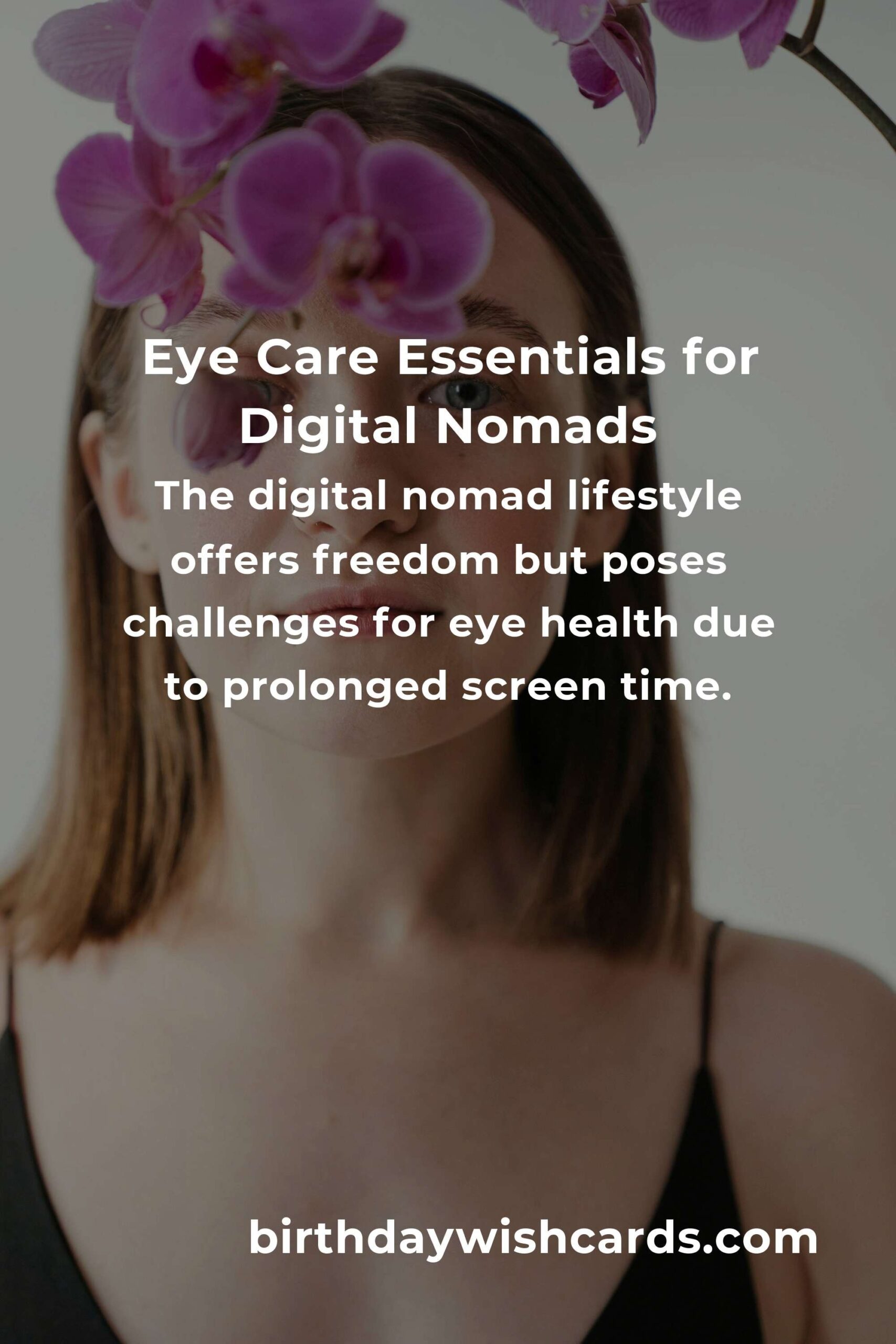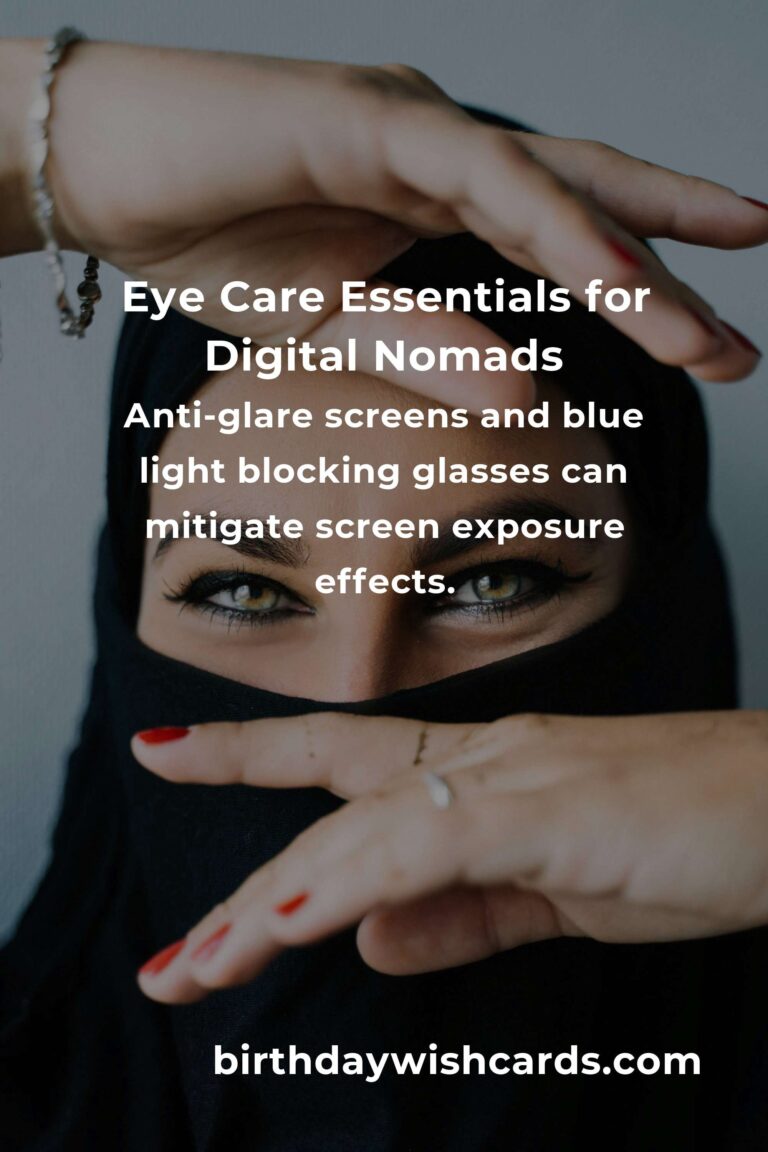
The digital nomad lifestyle is growing increasingly popular, offering unparalleled freedom and flexibility. However, with the benefits of working remotely comes the challenge of maintaining health, particularly eye health, due to prolonged screen time. This guide provides essential tips for digital nomads to protect their eyesight and maintain optimal eye health while traversing the globe.
The Impact of Screen Time on Eye Health
In today’s technology-driven world, screens are an integral part of our daily lives. For digital nomads, who often rely on laptops, tablets, and smartphones to work and communicate, the consequences of extended screen exposure can significantly impact eye health. Common issues include eye strain, dry eyes, and the more serious computer vision syndrome (CVS).
Eye strain occurs when your eyes get tired from intense use, such as staring at digital screens for long periods. It is characterized by symptoms such as sore or irritated eyes and difficulty focusing. Meanwhile, CVS encompasses a range of symptoms that digital nomads might experience, including blurred vision, headache, and neck or shoulder pain.
Practical Tips to Protect Your Eyes
Follow the 20-20-20 Rule
One of the most effective methods to reduce eye strain is the 20-20-20 rule. It suggests that for every 20 minutes spent looking at a screen, you should look at something 20 feet away for at least 20 seconds. This practice helps to relax the eye muscles and reduce fatigue.
Adjust Screen Settings
Ensure that your screen brightness is appropriate for the lighting in your environment. Too much contrast can exacerbate eye strain. In addition, consider using apps or built-in features that reduce blue light emission, which can help alleviate strain on the eyes.
Maintain Proper Lighting
Working in poorly lit conditions can increase eye strain. Ensure your workspace is well-lit but avoid direct glare on your screen. Natural light is preferable, but adjustable lamps can also be beneficial, allowing you to control the light intensity and direction.
Regular Eye Breaks
Taking regular breaks from screen time is crucial for eye health. Try to take a 5 to 10-minute break every hour. Stand up, stretch, and focus on distant objects to give your eyes a rest.
Nutritional Support for Eye Health
Nutrition plays a vital role in maintaining eye health. Incorporate foods rich in omega-3 fatty acids, lutein, zeaxanthin, and vitamins C and E into your diet. These nutrients can help combat oxidative stress and support overall eye function.
Foods such as salmon, tuna, kale, spinach, citrus fruits, and nuts are excellent choices for eye health. Consider supplementing your diet with a multivitamin if you find it challenging to get these nutrients through food alone, especially when traveling.
Regular Eye Check-Ups
Even with preventive measures, regular eye check-ups are essential. Digital nomads should schedule comprehensive eye exams at least once a year. These exams can detect early signs of eye conditions and ensure that your vision prescription is up to date.
Many countries have excellent eye care facilities, and it can be an opportunity to explore healthcare systems in different cultures. Always ensure that your travel insurance covers eye care services.
Specialized Eye Care Products
Investing in quality eye care products can make a significant difference. Look for anti-glare screen protectors, blue light blocking glasses, and lubricating eye drops. These products can mitigate the adverse effects of screen exposure and provide relief from dryness and irritation.
Conclusion
As digital nomads, prioritizing eye health is crucial for sustaining a productive and enjoyable lifestyle. By implementing these tips and maintaining a balanced diet, regular eye check-ups, and using the right products, digital nomads can protect their vision while working and exploring the world in 2025 and beyond.
The digital nomad lifestyle offers freedom but poses challenges for eye health due to prolonged screen time.
Common issues from extended screen exposure include eye strain, dry eyes, and computer vision syndrome.
The 20-20-20 rule helps reduce eye strain by relaxing eye muscles every 20 minutes.
Proper lighting, regular breaks, and screen adjustments are crucial for protecting eyes.
Nutritional support with omega-3, lutein, and vitamins is vital for maintaining eye health.
Regular eye check-ups are essential to detect early signs of eye conditions.
Anti-glare screens and blue light blocking glasses can mitigate screen exposure effects.
#EyeHealth #DigitalNomads #2025Vision #HealthyLiving #RemoteWork

